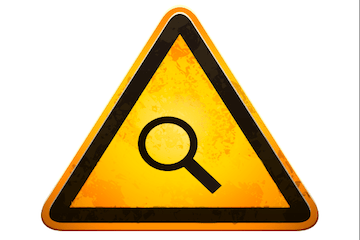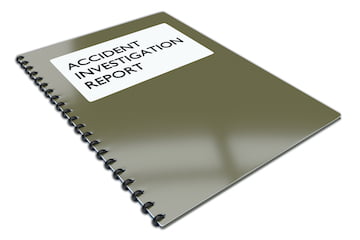Your basket is currently empty!
This article provides and overview of how health and safety enforcement occurs in the UK. There are many health and safety law which carry little weight without fair enforcement.
Related Articles
- UK Health and safety laws
- Health and Safety at Work act
- 6 Steps to Safety Management (small business)
- Popular Safety Management Systems
- Safety Management FAQs
- What is Corporate Manslaughter
Health and Safety Enforcement
In UK Health and Safety Enforcement law all depends upon the main activity undertaken at a place of work. There are 3 main bodies tasked with the enforcement of health and safety. These are;
- The Health & Safety Executive typically enforces at higher risk workplaces such as construction sites and factories.
- The Office of Rail and Road(ORR) enforces on the railways.
- Local Authorities(Usually Environmental Health Officers – EHO’s) enforce at lower risk premises such as retailers, offices and warehousing.
Each of these have authorised inspectors with specific powers. Much like police offers have powers to investigate suspected criminal acts.
To help enforce health and safety, authorised inspectors have the same powers, regardless of the area of enforcement.

Powers of Inspectors
While enforcing health and safety inspectors can:
- Enter any premises which they think it necessary to enter for the purposes of enforcing health and safety law. The power of entry can be exercised without permission or prior notice, at any reasonable time or at any time if dangerous;
- Take a police constable with them if they have reasonable cause for thinking they might be seriously obstructed;
- Take any other person authorised by their enforcing authority, such as a specialist, and any equipment needed;
- Order that areas be left undisturbed; take measurements, photographs and samples, carry out tests on, and/or confiscate articles and substances; and inspect and take copies of relevant documents;
- Seize any article or substance which they have reasonable cause to believe presents an immediate danger of serious personal injury and have it made harmless, by destruction if necessary; and
- Interview and take written statements from anyone they think might give them information relevant to their examination or investigation.
Inspector Enforcement Action
Inspectors have a range of health and safety enforcement options and tools available including:
- Informal advice
- Improvement Notice
- Prohibition Notice
The best option(s) will be chosen in each case. There is no hierarchical escalation route from informal advice to prosecution.
Informal Advice
Based on level of risk and level of management cooperation an inspector may deal with a situation informally by verbal advice or an explanatory letter. Provided agreed actions are completed on time no formal action will be taken.
Improvement Notice
An improvement notice may be served whenever health and safety legislation is being contravened. An improvement notice will specify the breach of legislation and may specify a means of complying. It has to allow a reasonable time (minimum 21 days) to complete any specified works.
Any appeal against an improvement notice must be made to the Employment Tribunal with 21 days of the date of service. The requirements of the notice would be suspended until the appeal was heard.
The Employment tribunal may uphold, cancel or vary the improvement notice as a consequence of the appeal.
Prohibition Notice
A prohibition notice maybe issued when the inspector considers that there is a risk of serious personal injury. The notice prohibits the carrying on of the work activity giving rise to the risk of injury.
If the risk of injury is imminent, the notice must take immediate effect and stop the work activity at once. If not, the prohibition notice is deferred, specifying the time by which the work activity must cease.
Any appeal against a prohibition notice must be made to the Employment Tribunal with 21 days of the date of service. The notice would stay in effect until the appeal was heard.
Criminal Prosecution
Any breach of legislation may give rise to a prosecution in the criminal courts. Health and safety offences are usually ‘triable either way’, this means the case may be heard in a magistrates court or a crown court.
The sanctions available to a crown court are greater than in a magistrate’s court. Table below shows the maximum sentences available to each court for breaches of HASAWA and health and safety regulations.
|
Breach |
Magistrates Court* |
Crown Court |
|
HASAWA Section 2-8 |
Term not exceeding 6 months and/or Unlimited fine |
Term not exceeding 2 years and/or Unlimited fine |
|
Regulations |
Term not exceeding 6 months and/or Unlimited fine |
Term not exceeding 2 years and/or Unlimited fine |
|
* For offences committed after 12th March 2015 (Section 85 of the Legal Aid, Sentencing and Punishment of Offenders Act 2012) |
||

Fees for Intervention (FFI)
The HSE now operates a Fee for Intervention (FFI) cost recovery scheme, which came into effect on 1 October 2012.
Under The Health and Safety (Fees) Regulations 2012, those who ‘materially’ break health and safety laws are liable for recovery of HSE’s related costs, including inspection, investigation and taking enforcement action.
The fee payable by duty holders found to be in material breach of the law is £124 per hour.
HSE Enforcement Policy – The HSE has published its Enforcement Policy Statement in accordance with the Regulators’ Compliance Code and the regulatory principles required under the Legislative and Regulatory Reform Act 2006.
Enforcing authorities are required to give regard to the principles when allocating resources.
The 6 Principles of Health and safety Enforcement
The HSE believes in firm but fair enforcement of health and safety law informed by the following five principles.
1. Proportionality – Enforcement action should be proportionate to the risks, or to the seriousness of any breach, which includes any actual or potential harm arising from a breach of the law.
The enforcing authorities should take particular account of how far the duty holder has fallen short of what the law requires and the extent of the risks to people arising from the breach.
Duty holders will be expected to follow relevant good practise.
2. Targeting – Enforcing authority efforts should be targeted primarily on those whose activities give rise to the most serious risks or where the hazards are least well controlled.
Action should be focused on the duty holders who are responsible for the risk and who are best placed to control it – whether employers, manufacturers, suppliers, or others.
3. Consistency – Consistency of approach does not mean uniformity. It means taking a similar approach in similar circumstances to achieve similar ends. In practice consistency is not a simple matter. Decisions on enforcement action are discretionary and require consideration of a range of variables including the degree of risk, the attitude and competence of management, any history of incidents or breaches involving the duty holder, previous enforcement action, and the seriousness of any breach.
All enforcing authorities are required to have arrangements in place to promote consistency in the exercise of discretion.
4. Transparency – Transparency means helping duty holders to understand what is expected of them and what they should expect from the enforcing authorities. The enforcing authorities should make clear to duty holders not only what they have to do but also what they don’t by distinguishing between statutory requirements and advice or guidance about what is desirable but not compulsory.
5. Accountability – Regulators are accountable to the public for their actions. This means that enforcing authorities must have policies and standards against which they can be judged, and an effective and easily accessible mechanism for dealing with comments and handling complaints.
6. Investigation – The following factors should be considered in determining which complaints or reported incidents to investigate and in deciding the level of resources to be allocated:
- The severity and scale of potential or actual harm;
- The seriousness of any potential breach of the law;
- Knowledge of the duty holder’s past health and safety performance;
- The enforcement priorities;
- The practicality of achieving results; and
- The wider relevance of the event, including serious public concern.
Enforcing Authority Prosecution
In health and safety enforcement, enforcing authorities will normally prosecute in the public interest, i.e. where, one or more of the following circumstances apply:
Death was a result of a breach of the legislation;
- The gravity of an alleged offence, taken together with the seriousness of any actual or potential harm, or the general record and approach of the offender warrants it;
- There has been reckless disregard of health and safety requirements;
- There have been repeated breaches which give rise to significant risk, or persistent and significant poor compliance;
- Work has been carried out without or in serious non-compliance with an appropriate licence or safety case;
- A duty holder’s standard of managing health and safety is found to be far below what is required by health and safety law and to be giving rise to significant risk;
- There has been a failure to comply with an improvement or prohibition notice; or there has been a repetition of a breach that was subject to a simple caution;
- False information has been supplied wilfully, or there has been an intent to deceive, in relation to a matter which gives rise to significant risk; and
- Inspectors have been intentionally obstructed in the lawful course of their duties.
Enforcing authorities should identify and prosecute individuals if they consider that a prosecution is warranted. In particular, they should consider:
- The management chain; and
- The role played by individual directors and managers.
Action should be taken against them where the inspection or investigation reveals that the offence was committed with their consent or connivance or to have been attributable to neglect on their part and where it would be appropriate to do so.
In 2010/11 there were 43 prosecutions of directors under section 37 of the Health and Safety at Work Act with 35 convictions. Seven faced charges as a result of a fatal incident; 15 were prosecuted after non-fatal incidents; and 21 resulted from an investigation where no incident of any nature had occurred.
Five of those convicted were given prison sentences; and three also received prison sentences for perjury.
Here is a list of all HSE prosecutions.
Fines imposed ranged from £150 to £99,900.
Where appropriate, enforcing authorities should seek disqualification of directors under the Company Directors Disqualification Act 1986.
Contact Us if you wish to discuss your workplaces safety training.
ARTICLE ENDS








